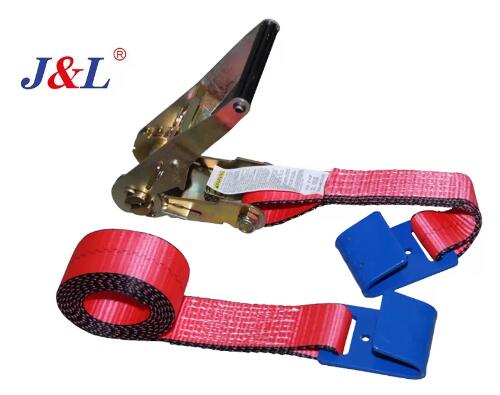Release time: Aug. 14, 2024
Ratchet straps are essential tools for securing cargo, equipment, and other items during transportation. Known for their durability and ease of use, these straps can hold significant tension, ensuring that items remain securely in place. However, the amount of tension a ratchet strap can hold depends on several factors, including the strap’s material, width, and the working load limit (WLL). Understanding these factors is crucial for safely and effectively using ratchet straps in various applications.

The Working Load Limit (WLL) is the most critical factor in determining how much tension a ratchet strap can hold. The WLL refers to the maximum safe load that a strap can handle during regular use. It is typically determined by the manufacturer and is a fraction of the strap's breaking strength, providing a safety margin to prevent overloading.
For example, if a ratchet strap has a WLL of 1,000 pounds, it means that the strap can safely hold up to 1,000 pounds of tension without risking damage or failure. It is important to note that the WLL includes the weight of the cargo as well as any additional forces that may be exerted during transit, such as sudden stops or turns.
The material and width of a ratchet strap also play a significant role in determining how much tension it can hold. Ratchet straps are typically made from polyester webbing, which is strong, durable, and resistant to stretching. Polyester is preferred because it offers minimal stretch under load, maintaining tension and keeping the cargo securely in place.
The width of the strap is directly related to its strength. Common widths for ratchet straps range from 1 inch to 4 inches, with wider straps capable of holding more tension. For instance, a 1-inch-wide strap may have a WLL of around 500 pounds, while a 4-inch-wide strap could have a WLL of up to 5,000 pounds or more. Choosing the appropriate width for your needs ensures that the strap can handle the required tension.
While the WLL is the maximum safe load, the breaking strength of a ratchet strap is the point at which the strap will fail under excessive tension. Breaking strength is usually several times higher than the WLL to provide a safety margin. For example, a strap with a WLL of 1,000 pounds may have a breaking strength of 3,000 pounds.
It is essential never to exceed the WLL of a ratchet strap, even if the breaking strength is significantly higher. Exceeding the WLL can lead to strap failure, risking damage to the cargo and potential injury.
Several factors can influence the tension capacity of a ratchet strap beyond its WLL, material, and width. These factors include:
- Strap Condition: Worn or damaged straps can have reduced tension capacity. Regularly inspecting ratchet straps for fraying, cuts, or weakened areas is crucial for maintaining their strength.
- Environmental Conditions: Exposure to extreme temperatures, moisture, or chemicals can weaken the strap material over time, reducing its tension capacity.
- Load Distribution: Uneven or poorly distributed loads can cause excessive tension on certain parts of the strap, increasing the risk of failure. Ensuring that the load is evenly distributed and that multiple straps are used if necessary can help maintain safe tension levels.
To maximize the tension-holding capacity of ratchet straps, proper usage is essential. This includes securing the strap correctly, applying the appropriate tension without overtightening, and regularly checking the straps during transit to ensure they remain secure. Overloading or misusing ratchet straps can lead to dangerous situations, so following the manufacturer's guidelines and safety recommendations is critical.
The amount of tension a ratchet strap can hold depends on various factors, including the WLL, material, width, and overall condition of the strap. Understanding these elements helps ensure that ratchet straps are used safely and effectively in securing cargo. If you need further information or are looking for reliable ratchet straps, contact us. As a trusted supplier, we can help you find the right products to meet your specific needs.